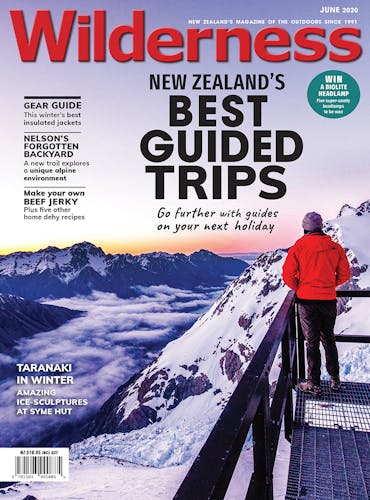A return to the good old days
Cone Hut was originally constructed in 1946 by the Tararua Tramping Club. It is a totara slab hut, ageless in architecture and sublime in setting.
This tramp is an amalgamation of the Cone Hut Track and Cone Saddle Track, with a return via the Lower Waiohine Track. And of course, Cone Hut is a nostalgic overnighter for a return to the good old days, wood smoke, lichen-encrusted totara slabs and all.
I crossed the swingbridge high above the Waiohine River and ascended the steep spur. The knobbly but well-formed track was relentless on its 500m climb until it flattened out near the ridge. A noticeable change in the forest character accompanied a change in track conditions. The undulations of the ridge hold water and the track was frequently boggy. Armies of kidney ferns shored up the tree trunks and a carpet of spleenworts, liverworts and mosses cloaked all available surfaces. After another 45 minutes, a distinct right turn in the track led to a junction with the track to Cone Saddle and then Cone Hut.
I headed left and descended the hill to the second junction to Cone Saddle. The screech of kākā startled me as I negotiated the roots and hollows. Cone Hut was a further 10 minutes, buried neatly in a small clearing.
The hut is a good example of bush carpentry, with rough pitted slabs originally hewn with adzes and axes – a construction method continued by the Tararua Tramping Club in the 1980s, when the hut was restored.
DOC originally wanted to move the hut to a tramping museum to be set up at Otaki Forks. However, protest by the Tararua Tramping Club led to it remaining in place and it was instead restored – although it retains its dirt floor.
From Cone Hut, I followed the signpost to Cone Saddle and headed right a few metres to rejoin the track towards Totara Flats. The track got quite ugly, with windfall, waterlogged patches and large root steps to negotiate. It initially undulated, crossing Clem Creek (unavoidable wet feet), then continued through a forest predominantly composed of silver beech and mahoe on a descent to the Waiohine River.
This is a rough track that follows the course of the Waiohine River, at times near the river level, but mostly perched high above on the valley side. The conditions are frequently boggy with many undulations to cross creeks.
The Waiohine River is subject to large floods following heavy rain which have given the river massive erosive powers, and hence steep-sided gorges on some of its sections.
Furthermore, where the river flows out of the Tararuas, it crosses the West Wairarapa Fault. This fault movement has uplifted the Tararuas at a similar rate to the river’s downcutting, thus a large quantity of debris has been removed from the interior and deposited where the river fans out of the steep watershed. The series forms one of the finest examples of terrace formation in the country.
Geological curiosities aside, I emerged from the Waiohine gorge back at the car park and thought back to the days of the hut builders and the sounds of adze on totara.
- Distance
- 13.6km
- Total Ascent
- 1295m
- Grade
- Moderate
- Time
- Car park to Cone Hut, 2.5hr; To Car park via Lower Waiohine Track, 3.5-4.5hr
- Accom.
- Cone Hut (free, six bunks)
- Access
- From the end of Waiohine Gorge Road
- Map
- BP33
GPX File
- Cone Hut and the Lower Waiohine Track (gpx, 11 KB)
GPX File
- Your device does not support GPX files. Please try a different device.








